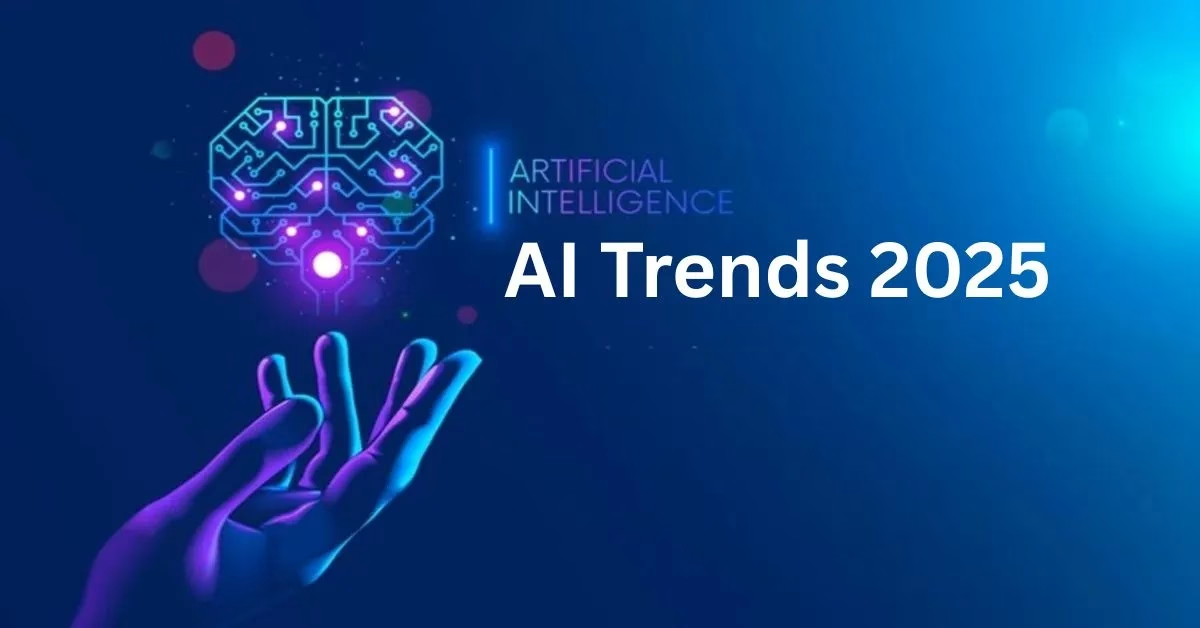AI Trends 2025 are redefining the way we work, create, and interact with technology. From OpenAI’s retina-scanning Orb to Google Veo 3’s cinematic video generation, and Nvidia’s AI hardware dominance to Telstra’s automation-driven workforce shifts—this year marks a significant leap in real-world AI adoption. Let’s explore the key breakthroughs shaping our digital future.
🌀 The Orb: OpenAI Wants to Prove You’re Human—Literally
Let’s start with something straight out of sci-fi: a chrome sphere that scans your eyeball.
It’s called The Orb, part of the Worldcoin project backed by OpenAI’s CEO, Sam Altman. The idea? Verify that you’re a real human being online in an era flooded with AI bots and fake accounts.
Once scanned, users get a “World ID” and a bit of cryptocurrency. Over 12 million people have already signed up globally. Altman believes this system could even help with universal basic income in the future, compensating people for simply existing in a world increasingly run by machines.
But not everyone’s impressed. The EU has launched investigations into how biometric data is handled, and privacy advocates aren’t exactly thrilled with the concept of scanning your eyeballs in exchange for tokens.
Still, it raises a fascinating question: how do we stay human online in the age of AI?
🎥 Google Veo 3: Video Creation Enters the AI Age
Imagine typing a sentence and watching it turn into a full cinematic video—with scenes, characters, voiceovers, and even music. That’s what Google Veo 3, the tech giant’s latest AI tool, is now capable of doing.
Unveiled at Google I/O 2025, Veo 3 doesn’t just generate visuals—it creates narratives. This tool is giving creators superpowers and making professional-quality video creation faster, cheaper, and more accessible than ever.
But naturally, people are wondering: what happens to the video editors, sound designers, and animators? If machines can do in seconds what once took teams days, where do the humans fit in?
Some say AI will become a collaborative partner. Others fear it’ll replace creativity altogether. The truth probably lies somewhere in between.
📉 Telstra’s AI-Driven Staff Cuts: The Corporate Shift Begins
Here’s the less-glamorous side of AI.
Telstra, Australia’s top telecom provider, recently confirmed it’s cutting jobs—due to AI automation. They’re not alone. Across industries, companies are trimming teams in departments like customer service, IT support, and even parts of engineering.
While exact numbers are still under wraps, Telstra’s CEO explained that “agentic AI” systems—smart programs that can act independently—will do more of the routine work. This allows the company to “streamline operations,” which is often corporate-speak for “cut costs by reducing headcount.”
This trend is only beginning. The question now is: how can workers evolve fast enough to stay relevant in an AI-first world?
🧠 AI Safety or Superintelligence: The Philosophical Divide
Within the AI research community, a big debate is quietly getting louder.
Some experts, like Daniel Kokotajlo (formerly at OpenAI), argue that AI could become so smart so quickly that it surpasses human control—possibly within just a few years. This idea, called recursive self-improvement, suggests AI might start upgrading itself beyond our comprehension.
Others, like researchers Sayash Kapoor and Arvind Narayanan, say that’s unlikely. They believe the real risks aren’t about a robot uprising but rather how we use AI today—whether for spreading misinformation, automating warfare, or manipulating economies.
Both sides agree on one thing: AI safety isn’t just a tech issue anymore—it’s a human issue.
🌍 India’s Ethical AI Push Is Gaining Global Respect
Not all AI news is dystopian.
A unused McKinsey report highlights India as a worldwide pioneer in Capable AI (RAI). Indian organizations, particularly in fund and healthcare, are effectively planning AI frameworks with decency, straightforwardness, and inclusivity in mind.
This move things since as AI develops, so does the weight to guarantee it doesn’t extend social or financial imbalance. On the off chance that India proceeds to lead in moral systems, it might set a unused worldwide benchmark for capable advancement.
⚙️ Nvidia’s Smart Pivot: Building for a Multi-Chip, Multi-Partner World
For years, Nvidia was known for dominating the AI chip market. But now, it’s evolving.
Faced with U.S. export restrictions that limit sales to countries like China, Nvidia is shifting strategy. At Computex 2025, CEO Jensen Huang introduced NVLink Fusion—a platform that lets companies blend their own chips with Nvidia’s tech to build custom AI systems.
Instead of chasing huge national contracts, Nvidia is now partnering with mid-sized businesses and hardware startups, especially in Taiwan and Southeast Asia. This makes their tech more adaptable—and less politically vulnerable.
It’s a strategic play, one that shows how AI isn’t just about software anymore—it’s an entire ecosystem.
🧩 Final Thoughts: AI Is No Longer Coming. It’s Here.
Whether it’s scanning your eye to prove you’re real, generating a Hollywood-style film in minutes, or quietly reshaping global workforces, AI is already part of our daily lives.
2025 may be remembered as the year AI stopped being a buzzword and became part of the fabric of society—raising new questions, creating new tools, and demanding new responsibilities.
If you’re running a business, creating content, or just trying to stay informed, one thing’s for sure: it’s time to engage with AI, not ignore it.
📌 FAQ Section
Q1: What is the OpenAI Orb and what does it do?
The Orb is a biometric device created by Tools for Humanity (co-founded by OpenAI’s Sam Altman). It scans your eye to verify you’re human and offers a World ID plus cryptocurrency as part of the Worldcoin project.
Q2: Is Google Veo 3 replacing human video editors?
Not entirely, but it’s disrupting the process. Veo 3 helps generate professional-looking videos from text prompts, making it a powerful tool—but also a potential job disruptor in creative fields.
Q3: Which companies are using AI to cut jobs?
Telstra, Australia’s top telecom firm is one of the first major companies to announce job reductions tied directly to AI efficiency gains. More companies may follow this path.

